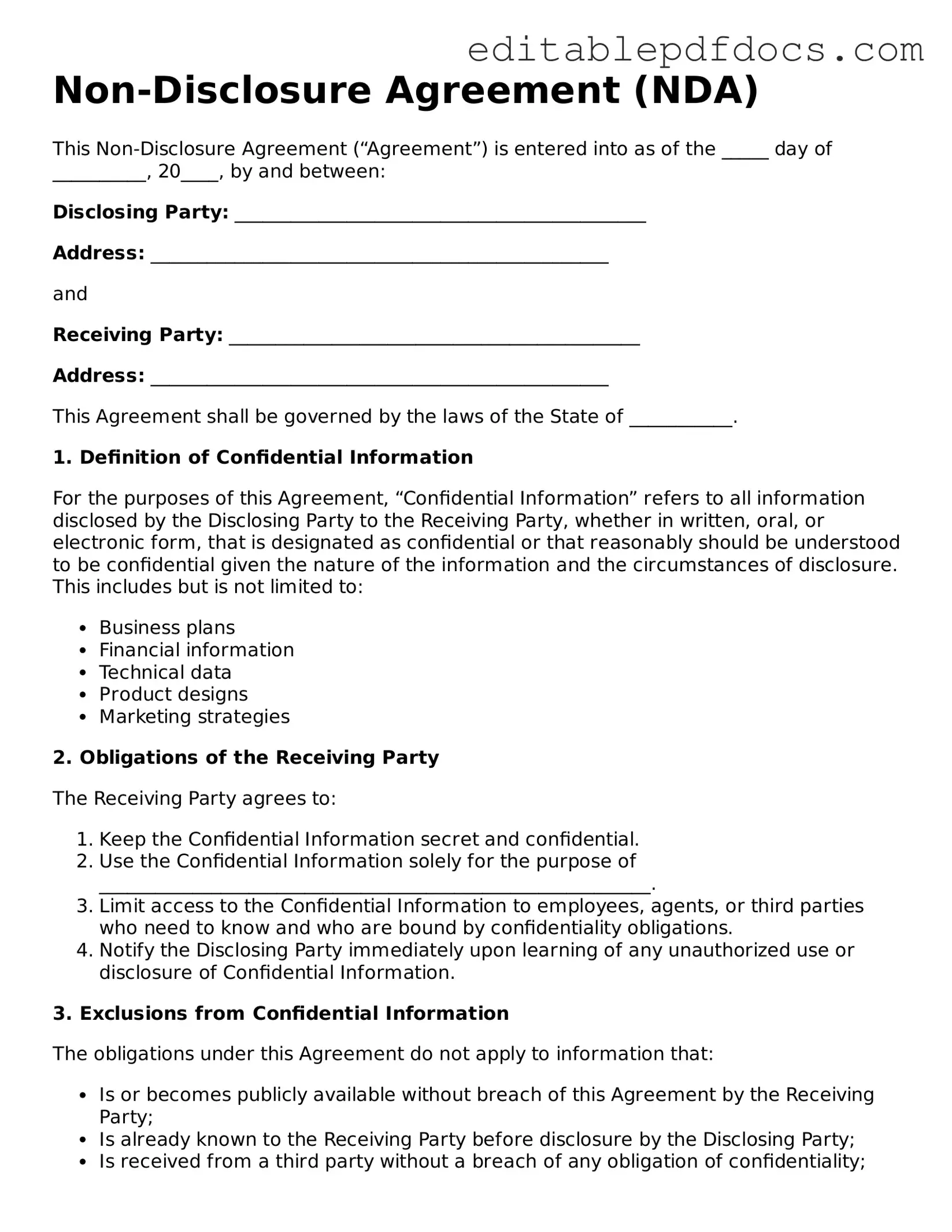When individuals or businesses decide to share sensitive information, they often turn to a Non-Disclosure Agreement (NDA) to protect their interests. However, many people make mistakes when filling out this important document, which can lead to misunderstandings or even legal disputes down the line. Understanding these common pitfalls can help ensure that the NDA serves its intended purpose.
One prevalent mistake is failing to clearly define what constitutes confidential information. Without a precise definition, the NDA may become ineffective, as the parties may have different interpretations of what information is protected. It is crucial to specify the types of information that are considered confidential, whether it be trade secrets, business plans, or proprietary data.
Another common error is neglecting to outline the duration of the confidentiality obligation. Some individuals assume that confidentiality lasts indefinitely, but this is not always the case. Clearly stating how long the information must remain confidential helps to set expectations and provides clarity for both parties.
People also often overlook the importance of including the obligations of both parties. An NDA should not only protect the disclosing party but also specify what is expected of the receiving party. This includes how they should handle the confidential information and the consequences of breaching the agreement.
In addition, many individuals fail to address the issue of exceptions to confidentiality. It is essential to outline circumstances under which the information may be disclosed, such as if it is already public knowledge or required by law. Omitting these exceptions can lead to confusion and potential legal issues.
Another mistake involves the lack of clarity regarding the governing law. If a dispute arises, the NDA should specify which state’s laws will apply. This can be particularly important for parties located in different jurisdictions, as laws can vary significantly from one place to another.
Some people make the mistake of using overly broad language in the NDA. While it may seem beneficial to cover as much ground as possible, vague terms can weaken the agreement. It is better to be specific about what is included and excluded to avoid ambiguity.
Moreover, individuals sometimes forget to consider the consequences of a breach. A well-drafted NDA should outline the repercussions for violating the agreement, which could include financial penalties or legal action. This can serve as a deterrent against potential breaches.
Another frequent oversight is not having the NDA reviewed by a legal professional. While it may seem like a straightforward document, having an expert review the NDA can help identify potential pitfalls and ensure that it complies with applicable laws.
Lastly, people often neglect to sign and date the NDA properly. An unsigned or improperly dated agreement can render it unenforceable. Both parties should ensure that they sign the document and keep copies for their records.
By being aware of these common mistakes, individuals can take proactive steps to create a more effective Non-Disclosure Agreement. This not only protects sensitive information but also fosters trust and clarity between the parties involved.
